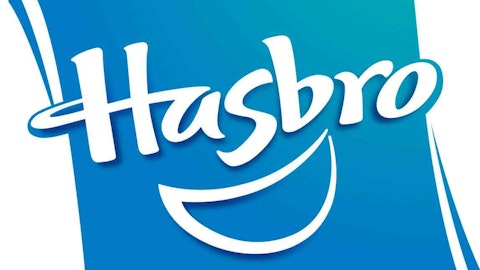Versus Competitors
Now that we understand how Time Warner generates and distributes its revenue, let’s compare its top and bottom line growth against two primary competitors – The Walt Disney Company (NYSE:DIS) and News Corp (NASDAQ:NWSA).

DIS Revenue TTM data by YCharts
Although all three companies have been growing earnings at a faster clip that revenue — a strong indicator that margins are well controlled — Time Warner’s earnings growth is the slowest. This can be attributed to its print business, which has been weighing heavily on the bottom line.
We should also compare the debt and cash reserves of all three companies over the same period.

DIS Cash and Equivalents data by YCharts
This is one area of concern for Time Warner investors — long-term debt piled up 19.37% to $19.88 billion, but cash reserves plunged 45.02% to $3.19 billion. That gives the company a debt-to-equity ratio of 66.21 — higher than both Disney and News Corp.
Lastly, we should check the stocks’ fundamental valuations to understand which is considered the cheapest at current prices.
| Forward P/E | 5-year PEG | Price to Sales (ttm) | Profit Margin | Debt to Equity | |
| Time Warner | 12.70 | 1.20 | 1.74 | 10.51% | 66.51 |
| Walt Disney | 14.20 | 1.41 | 2.31 | 13.07% | 40.25 |
| News Corporation | N/A | N/A | 1.96 | 11.65% | 55.50 |
Advantage | Time Warner | Time Warner | Time Warner | Walt Disney | Walt Disney |
Source: Yahoo Finance
Time Warner is fundamentally cheaper than Walt Disney, while News Corp. doesn’t even make the cut, since it is currently in the red. However, Disney outperforms Time Warner in two key areas — higher margins and lower debt.
The Foolish Bottom Line
Although Time Warner is ahead of News Corp., the company is stuck playing second fiddle to Disney. Like Disney, it possesses high-growth television networks. However, Disney has always been one step ahead of Time Warner in concentrating on high-growth segments — ESPN and theme parks — while divesting from slower growth ones such as movies and video games.
Time Warner is slowly but surely understanding that in the media conglomerate business, sometimes less is more. The fact that it is slimming down to its core competencies — television networks and movie studios — is extremely encouraging. However, that change will still take time, as it it stil in the early phases of divesting from its print media segment.
This isn’t the same Time Warner that wanted to control everything from print media to books to the Internet, a volatile, expensive combination that led to unpredictable margins and cash flow. This is a slimmer company that treats shareholders well with consistent dividend hikes and stock buybacks — making it a strong investment for conservative investors.
The article Time Warner Learns That Less is More originally appeared on Fool.com and is written by Leo Sun.
Copyright © 1995 – 2013 The Motley Fool, LLC. All rights reserved. The Motley Fool has a disclosure policy.



